

Personal Excellence presented by HR.com July 2023 1 Submit Your Articles 14 09 17 25 Is Chaos A “Bad” Thing? Or Is It Something We Just Have To Live With? - Gary Harpst, LeadFirst The Secrets Of Visionary Thinkers - Susan Robertson, Sharpen Innovation Get More Hours In Your Day With These Simple Steps - Jeff Ryan, AWCape JULY 2023 • Vol. 28 • No. 07 (ISSN 2564-1948) The Negative Impact Overlooking Your Mental Health May Have On Your Career - Rana Salman, Salman Consulting, LLC WANT TO FALL IN LOVE WITH YOUR JOB? - Dr. Beverly Kaye, Founder and CEO, Bev Kaye & Co.


Articles 12 Embracing The Power Of Intergenerational Knowledge Exchange Plan for the future by exploring the past - Jim Stovall, President, Narrative Television Network 16 Working From Home: The Feelings Vary From Best To Worst Based on a Wall Street Journal survey - Kevin Sheridan, Speaker, Author, Coach, Kevin Sheridan International 22 The Transformative Power Of Intentional Communication In Leadership Unleashing the influence of voice and body language - Jacqueline Farrington, Founding Director, Farrington Partners 27 Crisis Is A Given. The Key Is How You Handle It A few dos and don’ts - Robert L. Dilenschneider, President and CEO, Hill and Knowlton, Inc. Want To Fall In Love With Your Job? First, check your pulse - Dr. Beverly Kaye, Founder and CEO, Bev Kaye & Co. 06 On the Cover INDEX Personal Excellence JULY 2023 Vol.28 No.07 (ISSN 2564-1948)
Is Chaos A “Bad” Thing? Or Is It Something We Just Have To Live With?
7 tips to help leaders transform all the turmoil into growth and accomplishment


- Gary Harpst, CEO, LeadFirst
The Negative Impact Overlooking Your Mental Health May Have On Your Career
There’s an emotional price to be paid for working in sales

- Rana Salman, Founder, Salman Consulting, LLC
The Secrets Of Visionary Thinkers

2 simple steps to crushing subconscious assumptions
- Susan Robertson, CEO, Sharpen Innovation
Get More Hours In Your Day With These Simple Steps
5 ways to reclaim your time
- Jeff Ryan, MD, AWCape
INDEX
Top Picks 09 14 17 25
Editorial Purpose
Our mission is to promote personal and professional development based on constructive values, sound ethics, and timeless principles.
Excellence Publications
Debbie McGrath CEO, HR.com - Publisher
Sue Kelley Director (Product, Marketing, and Research)
Babitha Balakrishnan and Deepa Damodaran Excellence Publications Managers and Editors
Personal Excellence Team
Babitha Balakrishnan Editor
Chinnavel Design and Layout (Digital Magazine)
Vibha Kini Magazine (Online Version)
Submissions & Correspondence
Please send any correspondence, articles, letters to the editor, and requests to reprint, republish, or excerpt articles to ePubEditors@hr.com
Debbie Mcgrath Publisher, HR.com
Babitha Balakrishnan Editor, Personal Excellence

Nurturing Growth and Resilience for Personal and Professional Success

Inthe quest for personal and professional growth, it is essential to prioritize our own well-being and take care of our mental health. Nurturing our mental and emotional well-being enables us to stay motivated and resilient in the face of every challenge. Moreover, by viewing these challenges as opportunities for growth, we can harness their transformative power to propel ourselves forward.
It is also valuable to reflect on the past as we plan for the future. Examining our experiences and lessons learned can provide valuable insights and guide us toward making informed decisions. By prioritizing self-care and seeking support when needed, we can cultivate a strong and resilient mindset that empowers us to thrive personally and professionally.
Read the July edition of Personal Excellence for informative articles on personal and professional growth and uncover strategies to excel in both areas of your life, empowering you to reach new heights of success and fulfillment.
tips to help leaders transform all the turmoil into growth and accomplishment.
Taking care of oneself on multiple levels, including mental health, not only enhances personal well-being but also translates into improved performance and relationships, says Rana Salman (Founder, Salman Consulting, LLC) in her article, The Negative Impact Overlooking Your Mental Health May Have On Your Career.
Read Jeff Ryan's (MD, AWCape) article, Get More Hours In Your Day With These Simple Steps, to learn about effective strategies to put more hours back into your day, allowing you to focus on what truly matters.
In brief, by nurturing our mental and emotional resilience, we can navigate challenges with a positive mindset and view them as opportunities for growth and transformation.
We hope you find this edition of Personal Excellence informative and helpful to excel in all areas of life.
For customer service, or information on products and services, call 1-877-472-6648 Personal
Dr. Beverly Kaye's (Founder and CEO, Bev Kaye & Co.) article, Want To Fall In Love With Your Job? presents a strategy called PULSE that can help employees develop a stronger connection and satisfaction with their work. It emphasizes that both employees and managers play a role in creating a more fulfilling work experience, encouraging individuals to take the initiative in shaping their own job satisfaction.
For Advertising Opportunities, email: sales@hr.com
(ISSN 2564-1948) is published monthly by HR.com Limited, 56 Malone Road, Jacksons Point, Ontario L0E 1L0 Internet Address: www.hr.com
Copyright © 2023 HR.com. No part of this publication may be reproduced or transmitted in any form without written permission from the publisher. Quotations must be credited.
Is Chaos A “Bad” Thing? Or Is It Something We Just Have To Live With? by Gary Harpst (CEO, LeadFirst) offers seven
Kindly share your thoughts and feedback with us, so we can continue to improve and provide content that meets your needs. Thank you for reading, and we wish you all the best in your personal and professional endeavors.
Happy Reading!
Disclaimer: The views, information, or opinions expressed in the Excellence ePublications are solely those of the authors and do not necessarily represent those of HR.com and its employees. Under no circumstances shall HR.com or its partners or affiliates be responsible or liable for any indirect or incidental damages arising out of these opinions and content.
EDITOR’S NOTE
OR
Excellence
Subscribe now for $99 / year And get this magazine delivered to your inbox every month Become a Member Today to get it FREE! SIGN UP Write to the Editor at ePubEditors@hr.com
In a world of unparalleled challenges (global pandemic, racial injustice, political rivalry, digital 4.0, emotional malaise), uncertainty reigns. Finding opportunity in this context requires harnessing uncertainty and harnessing starts with reliable, valid, timely, and useful information. The Excellence publications are a superb source of such information. The authors provide insights with impact that will guide thought and action.
Excellence publications are my ‘go-to’ resource for contemporary and actionable information to improve leadership, engagement, results, and retention. Each edition offers rich and diverse perspectives for improving the employee experience and the workplace in general.
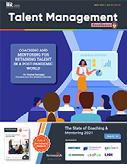
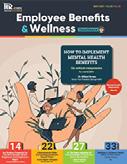



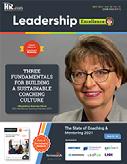
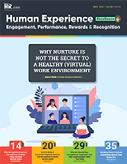
I regularly read and contribute to Leadership Excellence and Talent Management Excellence. I use many of the articles I read to augment my own presentations and I often share the articles with my clients. They are always quick, right on target for the latest issues in my field, and appreciated by my clients. If you want to stay up to date on the latest HR trends, choose a few of the different issues from the Excellence series of publications.

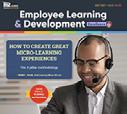
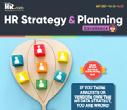
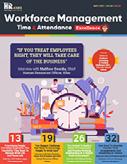
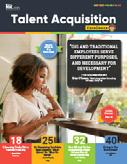
 CEO, BevKaye&Co.
CEO, BevKaye&Co.
 Founder and CEO, Bev
Founder and CEO, Bev

 Dave Ulrich
Rensis Likert Professor, Ross School of Business, University of Michigan Partner, The RBL Group
Julie Winkle Giulioni Author, Virtual /Live Keynote Presenter, Inc.’s Top 100 Leadership Speakers
Dr. Beverly Kaye
Dave Ulrich
Rensis Likert Professor, Ross School of Business, University of Michigan Partner, The RBL Group
Julie Winkle Giulioni Author, Virtual /Live Keynote Presenter, Inc.’s Top 100 Leadership Speakers
Dr. Beverly Kaye
WHY EXCELLENCE PUBLICATIONS?
We’re eager to hear your feedback on our magazines. Let us know your thoughts at ePubEditors@hr.com
Kaye & Co.
Want To Fall In Love With Your Job?
First, check your pulse
By Dr. Beverly Kaye, Bev Kaye & Co.
The hours fly by. You’re in the zone. You’re filled with a sense of well-being. You’re full of energy. Your breathing is accelerated. Your heart is racing. Too much caffeine? Maybe. Not enough sleep? Maybe. Or maybe you’re just in love.
Sure, too much Red Bull can cause these episodes too, but they are also widely recognized to be symptoms of what the urban dictionary calls “love.” That phantom phenomenon releases feel-good chemicals into our brains. That feeling of affection, attachment, or devotion that occurs when we’re around someone or something we find pleasurable. That four-letter word we use to describe how we feel about everything from children to cheese, from pets to pasta, from fashion to football teams. But how often have you heard the word “love” used to describe how people feel about their jobs?
You CanGet There from Here
I am optimistic enough to believe that most jobs can be more stimulating and rewarding than they are, but I also believe that job satisfaction, like love, is a two-way street that demands initiative and effort from both parties. Further, I’m convinced that with a few well-chosen steps, employees can fall in love with the jobs they already have.
The events of the last three years have caused workers to re-think both their value and their values. They are experiencing a new determination to get more of what they want out of work. They have
gained more power than ever before, launching the Great Resignation and more recently coining terms like “quiet quitting.” But what if employees didn’t have to quit quietly? What if they could stay where they are and love it? What if employees could actually fall in love with their work? And why put the onus for achieving this on the shoulders of the manager alone? Can employees and managers work together to create more love in the workplace? I say they can -- by adopting a strategy I call PULSE
PULSE is an acronym (yes, another one!) that stands for 5 keys to falling in love with your job.
Find Your PASSION
What if the thrill is gone? What if time at work drags on? What if you can’t locate “the zone” with a GPS? What if your heart hasn’t raced since your morning coffee? What if “All is well” becomes “All is hell”? Then, get the thrill back. Discover your passion and share it!
Look around you. Notice what you notice. Get a feel for the kind of work or workers that you feel comfortable with. Explore where they are. Find out what’s going on with them. Figure out where you might “sit and fit” there. Then tell your boss about it. Share what excites you about this kind of work and environment and ask for help finding it where you are – or someplace else in the organization. What’s the worst that can happen if all is hell anyway?
Personal Excellence presented by HR.com July 2023 6 Submit Your Articles
COVER ARTICLE
Build Your UNDERSTANDING
What if you don’t feel particularly committed to your organization? What if you no longer understand its purpose? What if you can’t figure out where you fit? Then, find out!
People will always be more committed to their organization when they understand what it is trying to achieve and how they can personally contribute to those goals. Managers need to help employees understand these things, but what if they are not sure of them either? Then you might have to grow your own understanding and your manager’s at the same time by asking questions like, “What is our team trying to accomplish here and how does it relate to the overall organizational goals?” “How does my work – and yours – contribute to those?” “What do you and my internal customers expect from me?” It can’t hurt to ask, as they say.
Create LINKS with Others
What if you don’t have much in common with those on your team? What if you deal more with heuristics than with humans? What if your company is more competitive than collaborative? What if you’re the only one on the team who does what you do? Then, link up!
There will always be those who can survive and even thrive in isolation. But if you’re not one of them, listen up. Research tells us that one of the top reasons
people are happy in their jobs is because of the relationships they have formed with others – and that these “links” add to their job satisfaction. If you don’t have them, you can feel disconnected, isolated, dare I say “unloved”? So, if you want to feel more in love with your work, link up with more of your colleagues. Even if you work remotely, communicate with teammates at least once or twice a week. Ask one of them to partner with you on an interesting “gig.” Ask them for feedback on an idea or project. Linking to others will help you get more of what you want at work. Maybe even love.
Expand Your SPACE
What if you’re feeling fenced in, controlled or caged? What if you want to question the rules, suggest solutions, or just figure things out on your own? What if there’s just not enough room for all of you in your job? What if you want to stand up and shout, “I like this place, but I want more space!” Then, make your case.
The solution to feeling cramped in your job is not to shrink-to-fit it. That will only make you feel small and undervalued. But you might be able to make a case for the benefit your added freedom would provide to your boss and to the organization. Suggest and quantify how much more valuable a contributor you could be to your boss if you had a little more latitude. (“The rest of the team will see how open-minded you are,” “The less time you spend supervising, the

Personal Excellence presented by HR.com July 2023 7 Submit Your Articles
Want To Fall In Love With Your Job?
more time you’ll have to do more important things.”) Point out how greater autonomy could allow you to develop an innovative process to break a current organizational logjam. If none of this closes the deal, then suggest that you both try it for a month – and explain what you will do to generate the benefit you’re promising.
Re-Charge Your ENERGY
What if you’ve lost enthusiasm for your work? What if you can’t find a way to recharge your psychic battery? What if you’re convinced that the only way to grow is to go?” Then, think again!
There’s a good chance you can energize your work right where you are. First, ask yourself what aspects of the job you actually love or just like. It might be your teammates or even your boss. It might be the day-to-day tasks you perform or the opportunity you have to mentor others. Then build on the energy that comes from those parts of your job. Look for ways to leverage them in a broader context. Ask yourself where you might apply your most energizing skills to other tasks or locations. If learning energizes you, find a mentor, sign up for a class or just read that book that’s been languishing on your bedside table. If you’re energized by challenges, then do something that scares you. Ask to lead a task force. Present a proposal to a senior leader. Invite an executive to lunch. In other words, take charge, re-charge as necessary and, like the best batteries, hold your charge. But don’t wait for your manager to call AAA.

Fortunately, checking your pulse has never been easier. You can do it yourself. Even if you only focus on one or two of the ideas above, you will get closer to falling in love with the job you already have.
Dr. Beverly Kaye is recognized internationally as one of the most knowledgeable and practical professionals in the areas of career development, employee engagement, and retention. Her contribution to the field of engagement and retention includes the Wall Street Journal bestseller, Love ‘Em or Lose ‘Em: Getting Good People to Stay, which is now in its 6th edition. Her recent books in the career development field include Up is Not the Only Way and Help Them Grow or Watch Them Go, which provided overwhelmed managers with a way to blend career conversations into their everyday routines.
Would you like to comment?

Personal Excellence presented by HR.com July 2023 8 Submit Your Articles
Want To Fall In Love With Your Job?
Is Chaos A “Bad” Thing? Or Is It Something We Just Have To Live With?
7 tips to help leaders transform all the turmoil into growth and accomplishment
 By Gary Harpst, LeadFirst
By Gary Harpst, LeadFirst
Thepast few years have taught us well: Chaos is relentless. We’ve had a global pandemic. Supply chain upheavals. An army of quiet quitters (and some pretty vocal ones, too). Oh, and here comes ChatGPT to add its own brand of disruption. And that’s not counting the “lesser” chaos that comes with the day-to-day management of people.
For most leaders, the impulse is to put your head down, hope the storm passes you by, and look for a
brighter day tomorrow. But you’re looking at chaos all wrong. It’s inevitable, it’s not a “bad thing,” and we’re best served by leaning into it.
Every one of us is capable of bringing order out of chaos. We need chaos. It’s a raw material resource that we can transform into purpose and growth. Our job as leaders is to facilitate this transformation in ourselves and our teams.
Personal Excellence presented by HR.com July 2023 9 Submit Your Articles
Top Pick
So…how do we cope with and master chaos? Here are a few tips:
Clarify the why behind what you’re doing. Leaders and employees must be clear on purpose to focus on the problems that must be solved. Otherwise, the chaos of pursuing too many opportunities will slow and distract you.
A world with too many opportunities to pursue is just another form of chaos. Just be sure that the vision or purpose you choose is not too vague. When this happens, it is difficult to guide resource allocation in a way that gets results.
Stop using chaos as an excuse to be a victim. For example, a manager might say, “I can’t promise to build the new training program and roll it out by the end of the first quarter, because I get so many requests for custom reports and other support issues. I can’t plan my work.”
Left unchallenged, this kind of thinking justifies living with chaos instead of managing it. Of course, we can’t control everything, but there is great power in making a plan, finding solutions when problems arise, and moving forward always.
Be realistic: Are YOU creating your own chaos? It’s uncomfortable to probe the turmoil of our desires, ideas, and half-formed thoughts. Yet not doing so can keep us in a vicious cycle of wanting things and not doing what it takes to get them. For example, we may not want to make the cold calls required to grow our sales, but not doing so leads to chaos—we make less money, we compromise our performance record, and we put our jobs in jeopardy.
Learn to love your employees. (Yes, you read that right.) Love is the only force powerful enough to get people to subsume their individual desires and pull together to work toward your mission. That means getting to know them as individuals, forgiving their screwups, and treating them right—yes, even if they don’t reciprocate.
Just as there must be a form of energy holding together the trillions of atoms that make up a single cell in the body, there must also be a force uniting team members. In the network of human relationships that make up a great organization, love is that bonding force. It fuels our capacity to bring chaos into order.

Personal Excellence presented by HR.com July 2023 10 Submit Your Articles
Is Chaos A “Bad” Thing? Or Is It Something We Just Have To Live With?
Help people align their desires with their actions. When trying to sort out the chaos of human interactions, leaders are more effective when they get to the root of what motivates people. Desire is what drives us to create what’s worth creating—be that an inspired organization, a work of art, or the next technology breakthrough.
Deep down, what do your employees really want?” The truth is, they may not know. Helping them figure it out fuels our capacity to bring chaos into order. It’s also the best way to care for them and show them the kind of love they need to develop their skills and thrive.
Leverage chaos to get people to act. Disruptions and crises have a way of aligning people’s desires with their actions. An example could be the rise of a major competitive threat or a big new product rollout that shakes up the status quo. These unifying times of focus can be fear-based, or they can be inspirational. They can help us get aligned internally and with other people.
Just don’t fall into complacency afterward. Order is easier to create than to keep. As the crisis passes, the aligning force dissipates, internal misalignments surface and organizational entropy sets in. A leader’s challenge is to help people who are not doing what they say they want to do. Be prepared to call them on it and help them get back on track.”
Overcoming chaos brings new chaos. (So, get used to it.) Chaos always exists. Bringing order to one level of chaos creates another level that must be managed.

Think about a start-up or a business that launches a new product or service experience. The first chaos mastery involves figuring out how to design, build, and launch something of value to a customer. But once launched, that product needs its own ecosystem for selling and supporting it. That second phase lasts much longer than the first phase and has new categories of ongoing chaos that must be managed.
Ultimately, we should think of chaos as a force that refines us all. It’s not something to dread. When you accept that chaos is inevitable, it allows you to focus on managing it and leveraging it to bring out the best in yourself and others, rather than fearfully wondering when it might turn up again.
Gary Harpst is the author of Built to Beat Chaos: Biblical Wisdom for Leading Yourself and Others. He is the Founder and CEO of LeadFirst Having been a CEO for 40 years, Gary has experienced the challenges of every aspect of business ownership, from start-up to rapid growth to acquiring other companies to being acquired. (Solomon Software, which he co-founded, was purchased by Great Plains and ultimately sold to Microsoft.) He is a keynote speaker, writer, and teacher whose areas of focus include leadership, business, and the integration of faith at work.

Would you like to comment?
Personal Excellence presented by HR.com July 2023 11 Submit Your Articles
Is Chaos A “Bad” Thing? Or Is It Something We Just Have To Live With?
Embracing The Power Of Intergenerational Knowledge Exchange
Plan for the future by exploring the past
 By Jim Stovall, Narrative Television Network
By Jim Stovall, Narrative Television Network
In our youth-oriented, 21st-century popular culture, we have a tendency to celebrate everything we believe to be new, improved, and cutting edge while forgetting everything that went before. Today’s youth have much to recommend them. Young people have energy, creativity, and unique thoughts. The elders among us have wisdom, experience, and perspective. Both are valuable but are not interchangeable.
I have repeatedly said and written that we should never take advice from anyone who doesn’t have what we want. If you want to live a successful life, you need to seek the advice and expertise of someone who has achieved success.
The fastest-growing demographic in our society today comprises people who have lived to be over 100.
Personal Excellence presented by HR.com July 2023 12 Submit Your Articles
They have lived through pandemics, world wars, the advent of flight and space travel, as well as our emergence into the digital age. They have seen triumph and tragedy, but unfortunately, too many of us diminish or ignore them as irrelevant or out of touch.
An African proverb states that when an elder dies, a library burns to the ground. Your parents, grandparents, aunts, uncles, and the nearest retirement home are untapped gold mines of information and experience. If you want to get to the top of a mountain, don’t ask for advice from someone standing at the bottom who is looking up at the peak. Ask someone who has been to the summit and returned safely.
In the investment arena, we are constantly told past performance doesn’t guarantee future results. This tip is true in that there’s no guarantee. However, the past offers us the best glimpse of what will likely take place in the future. Whether you’re looking at an economic downturn, political unrest, or global conflicts, you can form theories based on your best guess or simply talk to someone who has lived through similar conditions.
When my novel, The Ultimate Gift, and the subsequent movie, were released, it started a groundswell of investment advisors and estate planners working with their clients’ extended families to help their second, third, and fourth generations understand the value of wealth and what it took to earn it. Sharing your valuables without sharing your values is a disaster waiting to happen. At every family gathering, set aside some time to mine the wealth that exists within the memories of your elders.
As you go through your day today, plan for the future by exploring the past.

Jim Stovall is the President of the Emmyaward-winning Narrative Television Network as well as a published author of more than 50 books—eight of which have been turned into movies. He is also a highly sought-after platform speaker.
Would you like to comment?

Personal Excellence presented by HR.com July 2023 13 Submit Your Articles Embracing The Power Of Intergenerational Knowledge Exchange
The Negative Impact Overlooking Your Mental Health May Have On Your Career
 By Rana Salman, Salman Consulting, LLC
By Rana Salman, Salman Consulting, LLC
Any way you look at it, there’s an emotional price to be paid for working in sales. That’s why I’m often surprised that the mental health issue isn’t widely and openly discussed with people who sell for a living. It is a real problem with a serious impact on our industry.
I often wonder if it might get overlooked because salespeople generally appear confident, upbeat, and motivated professionals who can handle almost anything–like superheroes without capes. That’s precisely why I believe the mental health of salespeople is a topic that needs and deserves a complete discussion.
Personal Excellence presented by HR.com July 2023 14 Submit Your Articles
Top Pick
There’s an emotional price to be paid for working in sales
Protecting Your Mental Health
I’ll be first in line to talk passionately about the many benefits of a career in sales. It’s thrilling and profitable and exactly what those of us who thrive on a competitive challenge need in our lives. I can’t imagine doing anything else. And the excitement of teaching other reps how to sell effectively has been a major highlight in my professional life.
But I would be remiss if I didn’t take an opportunity to talk about another angle of this career choice–something that goes beyond just facing rejection. By its very nature, a career in selling can have an impact on the broad spectrum of our mental health.
My Story
From personal experience, I know how the constant push to perform can take a toll. When I started my sales career, I was one of the first people in the office every morning and one of the last to leave. I worked nights and weekends, even on vacations.
I should probably point out that the only person who expected me to put in so many hours was…me. I placed enormous pressure on myself–lots of it. Working hard was ingrained in my DNA. My tireless work ethic came from watching my parents hustle to survive and being an immigrant chasing the American dream. I was simply wired to keep going and going and going and going…until I couldn’t.
A freak accident that shattered my right foot stopped me in my tracks, literally and figuratively. I went from full speed to zero in an instant, and the contrast shocked me to my core.
I couldn’t walk. I couldn’t drive. The pain was excruciating. And the road to recovery involved surgery and hours of physical therapy. For the first time in my life, I was forced to pause, unpack, and reflect. That imposed time away made me look deep into myself and realize the pace I had established for my career was unhealthy and, even worse, unsustainable.
I’m not discounting the importance of hard work. I still wake up every morning with that burning drive to go after my dreams in full force. But the accident did
teach me something that changed the way I look at life.
I can’t be the best possible version of myself as a seller and someone who trains other salespeople if I don’t pay attention to my mental, emotional, and physical health. They are all connected. If I neglect one part of the equation, I can’t reach my full potential in the others. Talk about an epiphany!
As a fellow sales professional, that’s the piece of advice I hope you’ll take away from this. It transcends the scope of winning deals. No matter how hard you work, commit to taking care of yourself on multiple levels–including your mental health. You’ll discover that directly translates into being a better sales rep, a better employee, a better colleague, a better partner, a better parent, and a better friend. When it’s all said and done, that’s what really counts.
Excerpt from Sales Essentials: The Tools You Need at Every Stage to Close More Deals and Crush Your Quota by Rana Salman, pp. 27-29 (McGraw Hill, June 2023).”

Rana Salman, M.B.A, PhD is a renowned expert in the sales industry who is transforming the performance of sales teams worldwide. With a background in marketing and years of experience in enterprise-level B2B sales, she has established herself as a trusted partner for global organizations seeking to elevate their sales strategies and execution. As the founder of Salman Consulting, LLC, Salman collaborates with midsize and Fortune 500 IT companies to create tailored sales strategies, develop compelling sales content, and deliver impactful training sessions. She is also the author of Sales Essentials: The Tools You Need at Every Stage to Close More Deals and Crush Your Quota
Would you like to comment?
Personal Excellence presented by HR.com July 2023 15 Submit Your Articles
The Negative Impact Overlooking Your Mental Health May Have On Your Career
Working From Home: The Feelings Vary From Best To Worst
Based on a Wall Street Journal survey
By Kevin Sheridan, Kevin Sheridan LLC
Sinceworking from home (WFH) has become more permanent for many employees, we thought we would share the results of a Wall Street Journal survey asking people for the best and worst parts of working from home.
THE BEST
Not having to commute to/from an office: 100% The isolation: 41%
Spending more time with my family: 90%
Not being interrupted while working: 41%
Having to spend more time with my family: 75%
The proximity of bad habits (Netflix, food, bed): 36%
Working at/with my own pace/schedule: 27% Physical irritations (noise, bad lighting, limited space): 29%
Ability to care for child/parent/relative/friend: 9% Lack of structure: 7%
Ability to escape coworkers/office gossip/politics: 7% Management assuming that you are not working: 3%
Have you taken the time to ask your employees for their best and worst practices about working from home?
Kevin Sheridan is an internationally-recognized Keynote Speaker, a New York Times Best Selling Author, and one of the most sought-after voices in the world on the topic of Employee Engagement. For five years running, he has been honored among Inc. Magazine’s top 101 Leadership Speakers in the world, as well as Inc.’s top 101 experts on Employee Engagement. He was also honored to be named to The Employee Engagement Award’s Top 100 Global Influencers on Employee Engagement for three consecutive years, as well as being designated as a Senior Fellow at The Conference Board. Kevin’s premier creation, PEER®, has been consistently recognized as a long-overdue, industry-changing innovation in the field of Employee Engagement. His first book, Building a Magnetic Culture, made six of the best seller lists including The New York Times, Wall Street Journal, and USA Today. He is also the author of The Virtual Manager, which explores how to most effectively manage remote workers.
Would you like to comment?

Personal Excellence presented by HR.com July 2023 16 Submit Your Articles
THE WORST
The Secrets Of Visionary Thinkers

2 simple steps to crushing subconscious assumptions
By Susan Robertson, Sharpen Innovation
Whenwe think about famous visionary thinkers, we subconsciously assume that they have some magical characteristic that the rest of us don’t have or can’t achieve. But in reality, the only magic they have is an intuitive understanding of how to avoid some very common creative thinking blocks. One of those blocks is the Curse of Knowledge, a cognitive bias, or mental shortcut, that all humans share.
Stuck Inside the Box: The Curse of Knowledge
You’ve probably heard the term “Thinking outside the box.” And you’ve probably, at some point in your career, been asked the think outside the box. But without any understanding of why the box is there or how it was created, it’s hard to know how to break out of it. The reality is that we each create our own “box”, through this Curse of Knowledge.
Personal Excellence presented by HR.com July 2023 17 Submit Your Articles
Top Pick
To understand this concept, imagine for a moment that your task is to think of new ideas for salad dressing. Try to come up with a few in your mind right now - don’t skip ahead!

Chances are, the ideas that came to your mind were incremental variations of existing flavors or ingredients. You may have thought of fruit-flavored dressing. Or spicy, chipotle dressing. Or perhaps dressing that’s flavored like your favorite cocktail. Or your favorite dessert.
All really interesting ideas, IF you are only looking for ideas that don’t change the current nature of salad dressing, nor the way it’s currently manufactured, packaged, sold, or used. The task was to find NEW ideas for salad dressing. That challenge was not limited to simply new flavors, but your brain likely limited your thinking to mostly just new flavors.
Here’s why incremental ideas tend to be the first, and sometimes the only, kind of ideas to emerge. All humans rely on past knowledge to subconsciously try to shortcut problem-solving. We instantly – and subconsciously – call on everything we know from the past to come up with solutions for the new problem. While this ability to call on past learning is an incredibly useful trait in many situations (it’s one of the reasons we’re at the top of the food chain), when you’re looking for new ideas and solutions, it actually becomes a significant barrier. It limits your thinking to nothing but slight variations of what already exists.
The minute you saw the words “salad dressing”, your brain made a bunch of instantaneous assumptions that you’re likely not aware of. Those assumptions were probably things like
● Salad dressing comes in a bottle.
● It’s liquid.
● It’s stored in the refrigerator.
● It’s used on lettuce.
● Salad is eaten from a bowl or plate.
● Salad is eaten with a fork.
Using the salad dressing challenge again, now assume one of the above “facts” does NOT have to be true. What ideas could you come up with then? You might think of ideas like:
● Salad dressing that you heat in the microwave (not cold).
● Dressing for fruit, or meat (not used on lettuce).
● A powder whose full flavor is activated when it contacts the moisture of the lettuce (not liquid).
● Salad dressing in the form of a wrap, so you can eat the salad on the go (salad isn’t served on a plate).
● Salad dressing in the form of an edible skewer (salad isn’t eaten with a fork).
As you can see, the nature of the ideas that arise after crushing the imbedded assumptions is dramatically
Personal Excellence presented by HR.com July 2023 18 Submit Your Articles The Secrets Of Visionary Thinkers
different from the ideas that came before. That’s because your brain is no longer limiting your creativity with artificial guardrails that may not actually exist and that you weren’t even consciously aware of.
Interestingly, the more expertise you have in an area, the more of these limiting assumptions you have subconsciously imbedded in your thinking. So, as an expert in your field, you likely have MANY imbedded assumptions that you’re not aware of, but that are likely impeding your creative thinking in a significant way.
The Cure: Assumption Crushing™ Process
Fortunately, there is an antidote to the curse of knowledge. Assumption Crushing™ is a technique that involves consciously surfacing and challenging our hidden assumptions.
Assumption Crushing™ Step 1:
Surface your subconscious assumptions by generating a long list of statements that start with things like:
● Well, in our business everyone knows...
● We have to...
● Our product is/does/has...
● Well, of course …
● We could never...
Be sure to list some really obvious, superficial, or seemingly trivial “facts,” observations, processes, etc. Sometimes breaking the obvious ones can lead to the most innovative ideas. For example, the fact that salad dressing is liquid seems fairly trivial. But breaking that assumption led to some truly breakthrough ideas.
Assumption Crushing™ Step 2:
Once you’ve come up with a long list, pick one that may not have to be true, and start to think of new ideas based on breaking that one. Then pick another and do it again. And again. You’ll amaze yourself with the innovative ideas you come up with.
Remember that the Curse of Knowledge is based on experience and expertise. Many people often assume that the best way to get new thinking, new ideas, and new solutions is to bring together a bunch of experts on the topic. But the reality is that all those experts will have a very similar set of subconscious mental frameworks. (They’ll all have essentially the same Curse of Knowledge.). A better way to generate new ideas is to invite a few experts, and then several other people with different experiences, knowledge, and perspectives. Those non-experts will help force the experts to confront and overcome their curse of knowledge.
The Curse of Knowledge is a formidable adversary that exists in our brains all the time and hinders our visionary potential. By embracing Assumption Crushing™, we can shatter the chains that confine our thinking and unlock the path to visionary breakthroughs.
Susan Robertson empowers individuals, teams, and organizations to more nimbly adapt to change, by transforming thinking from “why we can’t” to “how might we?” She is a creative thinking expert with over 20 years of experience speaking and coaching in Fortune 500 companies. As an instructor on applied creativity at Harvard, Susan brings a scientific foundation to enhancing human creativity.
Would you like to comment?

Personal Excellence presented by HR.com July 2023 19 Submit Your Articles
The
Visionary
Secrets Of
Thinkers
HRCI® & SHRM® CERTIFICATION PREP COURSES
GROUP RATES AVAILABLE
For HR Professionals
Show that management values the importance of the HR function, and has a commitment to development and improvement of HR staff.
Ensure that each person in your HR department has a standard and consistent understanding of policies, procedures, and regulations.
Place your HR team in a certification program as a rewarding team building achievement.
For Your Organization
Certified HR professionals help companies avoid risk by understanding compliance, laws, and regulations to properly manage your workforce.
HR Professionals lead employee engagement and development programs saving the company money through lower turnover and greater productivity and engagement.
A skilled HR professional can track important KPIs for the organization to make a major impact on strategic decisions and objectives, including: succession planning, staffing, and forecasting.
HR.com/prepcourse CALL TODAY TO FIND OUT MORE 1.877.472.6648 ext. 3 | sales@hr.com
1 Less expensive than a masters or PhD program, and very manageable to prepare with
2. legislation and best practices
3. Recognized, Industry benchmark, held by 500,000+ HR Professionals
Group Rate Options
We offer group rates for teams of 5+ or more for our regularly scheduled PHR/SPHR/ SHRM or aPHR courses.
For groups of 12+, we can design a more customized experience that meets your overall length of the course.
Groups rates for HRCI exams are also available as an add-on.
All group purchases come with 1 year of HR Prime membership for each attendee to gain the tools and updates needed to stay informed and compliant

CALL TODAY TO FIND OUT MORE 1.877.472.6648 ext. 3 | sales@hr.com | HR.com/prepcourse
1 2 3
The Transformative Power Of Intentional Communication In Leadership
Unleashing the influence of voice and body language
By Jacqueline Farrington, Farrington Partners, Inc.
Leaders often underestimate how intentional they need to be in every aspect of their communication, including voice and body language. It turns out it’s a hazard of the job. Merely holding positional power can reduce your ability to perceive how your words and gestures impact others. Researcher Adam Galinsky calls it the “power amplification effect”. A raised eyebrow at the wrong moment or an offhand
comment can spike fear in team members or sabotage trust – even impact the bottom line.

It’s a lesson one CEO learned the hard way.
Years ago, a leader we’ll call Vikram was a new CEO. He came up from inside the company. Despite being groomed for the role, when it came time to
Personal Excellence presented by HR.com July 2023 22 Submit Your Articles
promote him, there was a lot of internal discussion about whether he was ready for the top job. Ultimately, the board gave its approval.
They quickly regretted the decision after his first earnings call.
Because the report was by phone, the attending analysts and press couldn’t see Vikram, only hear him. When the call ended, the biggest news wasn’t the company’s lackluster earnings but Vikram’s tone of voice. The press characterized him as deflated and noncommittal about the company’s future.
The media reports undermined the company’s reputation and sabotaged any faith the board had in Vikram to steer the ship. When they hired me to work with him, the board was blunt: We can’t afford this to happen again.
It didn’t. Vikram handled the next earnings call like a seasoned CEO.
During our work in the intervening months, Vikram discovered a pivotal truth: Your voice and body are tools for delivering communication with emotional intelligence. If your tools aren’t sharp or used correctly and for the right tasks, your message will fail. There must be congruency between your gestures, voice, and intent. Without alignment, you risk being misunderstood and possibly alienating the people you most want to influence.
Full-Throated Leadership
Your voice is a richly expressive instrument capable of broadcasting a wealth of information about you, your motives, and your social adeptness. The tone, pace, rhythm, and pitch of speech carry nuanced shades of meaning, creating a secondary level of communication known as paralanguage. Our brains are hardwired to perceive and trust these subtle vocal cues, prioritizing them over the content. In short, as Vikram found, how you say what you say matters.
You can use words to startle, motivate, provoke, deflate, or soothe. But along with word choice, your
decision to punch up or downplay different phrases demonstrates your sensitivity to the situation and the listener’s needs. If Vikram had deliberately used his voice to underscore his genuine belief in the company’s robustness, the news – and the firm’s profitability – may have taken a different turn that day.
To Be Heard, Use Your EARS
You’re more likely to land important messages by adding variety and contrast to your speech. Listeners can habituate to what we’re saying and tune out –especially with a monotone delivery. To leverage your full vocal expression, remember the acronym EARS: Energy, Articulation, Resonance, and Stops. Let’s break it down:
● Energy refers to the volume and speed of your voice. Speaking at a comfortable pace, between 110 to 160 words per minute, helps maintain listener engagement. Think of velocity in terms of the message you want to convey. Faster speaking may suit lighter, humorous content, while slower speech often fits more serious, complex, or crucial information.
● Articulation involves the clarity of your speech – your consonants, vowels, and the words you choose to emphasize. A well-articulated message helps your audience understand and remember key points.
● Resonance gives your voice its unique quality, including pitch and tone. It’s the color and timbre of your voice – crucial for projection and volume. Using your full optimum pitch range, where you’re most resonant, makes your voice more attractive and easier to listen to for team members.
● Lastly, Stops are intentional pauses in your speech, allowing your audience time to absorb your message. Extended pauses can add gravity and confidence to your delivery. It’s like using your voice as a highlighter, emphasizing key points for the listener.
Personal Excellence presented by HR.com July 2023 23 Submit Your Articles
The Transformative Power Of Intentional Communication In Leadership
Embody the Message
Nonverbal communication helps our audiences understand what we’re saying and how to feel about our message, making body language a crucial pathway to building trust and rapport. The problem is that leaders are often bombarded with a grab-bag of instructions. Appeals to hold eye contact, smile, maintain an open posture, and use expressive gestures are nearly mantras in the leadership canon. While each of these suggestions can be useful for building rapport, they can also send the wrong signal in the wrong context.
It’s more important to clarify your reasons for communicating – to understand why you’re modifying your body language. Begin by asking yourself these questions:
1. What message do I need this audience to hear?
2. For this message to be heard by this audience, how do I need to show up?
3. How does this compare to my habitual way of showing up?
Then, to help your body move in concert with your objectives easily and authentically, remember three simple things:
Intend to Connect – Begin by taking stock of the physical space and the message’s context. Ask yourself how big or small your gestures need to be. Where do you need to be relative to the person or audience for them to feel comfortable and you to be heard? Then lower your defenses – and theirs – by practicing sincere curiosity and openness. In response, your body will naturally make itself less threatening. You’ll find yourself relaxing, leaning in, nodding, and matching your posture to theirs.
Be Purposeful – Are your gestures attached to the meaning of your words, or are they repeated over and over as a habit or nervous filler? Shuffling your feet, looking around, and waving your hands could signal you’re off-ground and disconnected from the audience. Breathe and reengage your intention to connect. Focus your physical energy on movements
that underscore the reasons behind your message. Your gestures and posture will naturally become crisp, deliberate, and energetic when charged with a goal.
Clarify Your Point of View – How you feel about your message dramatically impacts your delivery. Imagine you need to give a team member critical feedback for a missed deadline. If you’re angry, your gestures can show up as accusing or, worse, threatening. It’s okay to be upset by the delay, but what do you want to accomplish with the message? If you aim to set firm expectations yet motivate the employee, your movements will likely soften. Clarifying your intention aligns your nonverbal cues and makes them specific to the context.
At the next earning call, Vikram still wasn’t visible to his audience, but he acted as if he was. Being congruent in his actions and intentions carried through to his voice and changed the tenor of the call. Exercising mastery over his voice and gestures not only helped Vikram deliver an on-point address but truly embody leadership.
Jacqueline Farrington has over 20 years of experience as a change-maker, empowering leaders and their teams to spark transformation and innovation through communications. She works with senior and board-level leaders at multinationals such as Amazon and Microsoft. Jacqueline blends her experience in the performing arts, vocal pedagogy, communications, psychology, and organizational and executive coaching to help her clients find unique communication solutions. Her new book, The Non-Obvious Guide to Better Presentations: How to Present Like a Pro (Virtually or in Person), provides actionable, practical concepts, tips, and tools to improve any speech or presentation.
Would you like to comment?

Personal Excellence presented by HR.com July 2023 24 Submit Your Articles
The Transformative Power Of Intentional Communication In Leadership
Get More Hours In Your Day With These Simple Steps
5 ways to reclaim your time
By Jeff Ryan, AWCape
Have you said this phrase: “I wish I had more hours in the day” today?
Let’s face it: the world of work is fast and it doesn’t stop. And finding extra hours in the day can feel like an impossible task.
However, by implementing strategic approaches and making smart choices, you can reclaim precious time and increase productivity.
Here are five effective strategies to put more hours back into your day, allowing you to focus on what truly matters.
1. Automate, Automate, Automate
Automation is the key to efficiency and time-saving. Embrace technological solutions, especially cloudbased HR, payroll, and finance software. These tools streamline administrative tasks, reducing manual effort and eliminating human error. By automating routine processes, you free up valuable time for more important activities, such as strategic decisionmaking and professional growth.
Interestingly, each year, searching for paper documents results in the loss of 16 working days, and employees waste over 21 days per year performing repetitive or menial activities at the workplace.
Automation does not necessarily mean chatting with data scientists and process specialists; it can be as easy as using an app like Calendly to allow others to see open slots in your diary and schedule time with you. This automates your calendar management - and for those working with people in other organizations (like consultants), this can create massive time savings.
2. Embrace the Power of Collaboration
Recognise that you can’t do it all. Identify tasks that can be delegated and consider outsourcing them. Whether it’s hiring freelancers, virtual assistants, or specialized service providers, outsourcing allows you to focus on core responsibilities while entrusting non-essential tasks to competent professionals. Outsourcing not only saves time but also brings expertise and fresh perspectives to your business. The question for outsourcing should always be: “Is this a core function that differentiates my business?” If not, outsourcing or delegation may be a good option allowing you to focus on your core functions.
According to Deloitte’s survey, 65% of companies and businesses said that outsourcing services enable them to focus on their core functions, while 63% reduced their expenses.
Personal Excellence presented by HR.com July 2023 25 Submit Your Articles
Top Pick
3. Break Free from Analysis Paralysis
Not every decision requires excessive analysis and deliberation. By adopting a more pragmatic approach, you can reduce decision-making time significantly. Differentiate between critical decisions that impact your business’s long-term success and routine choices that can be made swiftly. Agile organizations fail fast and have immediate feedback cycles to adjust.
Practice effective decision-making by gathering essential information, setting clear objectives, and trusting your instincts. Overthinking can consume valuable hours that could be better utilized elsewhere.
4. Create a Company Culture that Inspires
A motivated and engaged team is crucial for a productive work environment. However, fostering employee engagement doesn’t have to be a timeconsuming endeavor. Start by building a positive company culture that values open communication, recognition, and work-life balance.
Encourage team members to take ownership of their work and empower them to make decisions independently. By nurturing a supportive and inclusive environment, you create a self-sustaining system where employees are motivated, engaged, and require less micromanagement.

Most importantly, leaders must live the values. Actions speak much louder than words - as provided in the welcome pack.
5. Find Hidden Gems in Your To-Do List
We all have tasks we dread, but combining them with enjoyable activities can make them more bearable. Create a to-do list that incorporates essential and unpleasant tasks and also activities you genuinely enjoy.
For example, if you dislike responding to emails, pair it with listening to your favorite podcast or taking a short walk. By bundling these tasks, you not only complete them efficiently but also find small moments of pleasure in the process.
Also, look for quick wins. Success and completion of tasks generate endorphins and energy. This is a great way to make a daunting list more bearable and achieved quicker.
Reclaiming your time and putting more hours back into your day is possible. Small changes can have a significant impact. Prioritize what truly matters, and you’ll discover the hidden hours that can be used to achieve your goals and lead a more fulfilling life.
Remember doing nothing new (1365 = 1) BUT changing 1% a day (1.01)365 = 38 i.e. 38 times better.
Jeff Ryan is the MD for AWCape, a Sage Business Partner, and has over 20 years of experience. He has extensive strategy and technology consulting, project management, and business development experience in multiple industries. In addition, having held several senior positions in different organizations has given Jeff a deep understanding of business drivers and needs.
Would you like to comment?

Personal Excellence presented by HR.com July 2023 26 Submit Your Articles Get More Hours In Your Day With These Simple Steps
Crisis Is A Given. The Key Is How You Handle It
A few dos and don’ts
By Robert L. Dilenschneider, Dilenschneider Group
Everyleader hopes they never have to face a public relations crisis. That’s unrealistic. Any company that puts itself out there—no matter how cautious and how diligent its people are—can and likely will experience a mishap. Sometimes those mishaps are minor; other times they have deadly consequences. And thanks to the always-on nature of today’s media, how you handle your (inevitable) crisis will determine whether your reputation is destroyed or preserved… and in some cases strengthened.
The key to good crisis management is three-fold: preparedness, responsiveness, and transparency.
Crisis management is not just about handling the situation once it has happened. It’s about foresight, anticipating potential crises before they occur, and having a robust plan in place to address them effectively when they do.
The preparedness piece, of course, comes first. In a crisis, every second counts. Quick decision-making, clear communication, and a unified message can make the difference between a company that survives and thrives and one that takes a serious hit to its reputation.
With that in mind, here are a few things TO DO and a few things NOT TO DO:
DO: Tell it all and tell it fast. Some crises take hours, and some draw out for months. In the early stages, the best strategy is to tell it all and tell it fast. Be disciplined and know that nothing happens automatically. Making sure the core team is on the same concise page is very important, as mixed messages hinder the company’s ability to navigate the crisis.
Johnson & Johnson’s handling of the Tylenol crisis remains the gold standard on what to do and is a case study still taught four decades later. Seven people had died in the Chicago area in 1982 after taking Extra-Strength Tylenol capsules that had been poisoned with cyanide. What set the company apart was how they responded: They recalled 31 million bottles of those capsules and replaced them all with a safer product free of charge.
The outcome was Johnson & Johnson barely lost market share and customers. After releasing their tamper-proof packaging—which changed the industry—they rebounded well, even if it did cost them almost $100 million.
The point is this crisis could have been lethal, yet they were able to turn it into an opportunity to rebuild public trust instead of lose trust by getting out in
Personal Excellence presented by HR.com July 2023 27 Submit Your Articles
front of the story, and putting their customers and public safety first instead of trying to spin the story.
Besides moving quickly and transparently, make sure your message contains a heavy dose of empathy. As Dedmon writes: “It is a generally accepted rule that the best messaging has a strong emotional component versus simply a logical and rational argument.”
A few more tips:
● Talk from the viewpoint of your audience and to their self-interest.
● Avoid jargon and euphemisms. An explosion is not an incident.
● Tell the truth, even if it hurts. Don’t be defensive.
● If the media gets something wrong, correct it immediately.
● Never say, “No comment.” If the information is private—say, about personnel—explain the reason. Then find something else to say.
DON’T: Try to escape accountability at the expense of your customers’ well-being.

In March of 2021, podcast host and comedian Jensen Karp tweeted a photo of what he said he found in a box of Cinnamon Toast Crunch cereal: two shrimp tails. After offering to send Karp a replacement box of cereal, the social-media team tweeted that those weren’t shrimp tails; they were cinnamon-sugar clumps.
Keep in mind that Karp’s tweet had included a photo, so thousands could see for themselves that the “accumulation” looked exactly like shrimp tails. As can—and does—happen in the Twitterverse, a flood of ridicule and memes followed. Soon, the shrimp tails leaped from Twitter to news stories in publications such as the New York Times, Washington Post, and Business Insider and broadcasts such as Fox News and CNN.
The social media team for Cinnamon Toast Crunch should have responded with the alacrity and seriousness appropriate for a matter of consumer health, even if it couldn’t verify the contamination
Personal Excellence presented by HR.com July 2023 28 Submit Your Articles Crisis Is a Given. The Key Is How You Handle It
or quickly trace how it might have happened. In fact, one manager responded that it couldn’t have happened in his facility, which sounded like passing the blame, not reassuring customers.

Bottom line: Instead of the ridiculous explanation of accumulated cinnamon sugar, General Mills could have responded by recalling all the boxes sold at Costco, where Karp had purchased his cereal. Stories like this live on via the internet, and if you Google “Cinnamon Toast Crunch,” you’ll see lots more sordid details.
DON’T: Try to spin the story or be dishonest.
While Johnson & Johnson’s handling of the Tylenol scare is a model for the right way to address a scandal, Volkswagen provides the wrong way. They were accused by the EPA in 2015 of deliberately violating the Clean Air Act through software that permitted their cars to pass emissions tests that without the software would not. No one likes to be misled, and that includes the EPA.
The company executives bungled the response. They first lied about it, then later admitted they
knew. Then they moved to lay off 300,000 workers. Although probably unrelated, the perception of it was that employees were being fired to make up for the loss in profit. In response, consumers took to social media to charge the company with deliberately deceiving them.
It takes a long time if ever, to repair this type of damage to a company’s reputation and to rebuild trust. In contrast to the Tylenol scare, Volkswagen’s executives’ response made things entirely worse.
DON’T: Tweet “thoughts and prayers” or give another canned response…
In December of 2021, a tornado ripped through an Edwardsville, Illinois, Amazon warehouse, destroying it. Six people died. But instead of an immediate and appropriate response, Jeff Bezos’ first acknowledgment of the tragedy came as a tweeted statement twenty-four hours later and came across as insincere. The lesson learned here is that any statement’s wording is crucial. Part of Bezos’ tweet was “our thoughts and prayers are with their families and loved ones,” but apparently unbeknownst to Bezos, the phrase “thoughts and prayers” has
Personal Excellence presented by HR.com July 2023 29 Submit Your Articles
Crisis Is a Given. The Key Is How You Handle It
become an overused line by politicians and others responding to mass shootings and other mass casualty incidents.
…And CERTAINLY DON’T: Leave the door open for more trouble!
After the Edwardsville crisis, Bezos started his own tornado that would rip through Amazon and the country at large: Word came out that Amazon workers were allegedly forced to continue working through tornado warnings. OSHA investigated and found that Amazon had met the minimum standards, but it ultimately has remained a stain on the company’s reputation to this day. (It seems clear that when deadly natural disasters threaten, “minimum” isn’t good enough!)
DON’T: Panic and overreact.
In 1989, the FDA came down on grapes imported from Chile—after being fed an anonymous tip. The FDA inspector in Philadelphia made a special examination of a minuscule portion of the hundreds of thousands of tons of fruit brought in daily. Two grapes in 600,000 crates were found to be injected with cyanide.
The FDA commissioner was about to ban the sale of Chilean grapes when a lawyer called me to help the Chilean government deal with the impending crisis.
We went to work quickly and made sure the Chilean government was able to present a single, consistent position to the Department of Commerce, the Federal Trade Commission, and the FDA. We reinforced with the FDA the risk of inappropriately submitting to terrorist demands. The real villains were unknown, but the victims would be the American-consuming public and the fruit growers of Chile.
Fortunately, the danger to the public was not real. If it had been, we would have handled the situation differently. We were able to convince the FDA to lift the ban, and then broadened the field of information to include the trade, the industry, consumers, and the media, and demonstrated the absurdity of being
bamboozled by two grapes in 600,000 crates. We were careful, however, to never try to dismiss the public’s fear directly.
Finally, never dodge the media. If the crisis is a tragedy, then reporters will have to write or broadcast stories no matter what. You can’t completely control the narrative, but you can make sure the company’s message is heard.
Build relationships with the media long before a crisis occurs. Know the journalists who cover your industry. Feed a reporter something interesting (not self-serving) going on in your company or industry. Tip them off when a big announcement is about to be made, such as a change in leadership or relocation of headquarters. Answer calls and emails. Building trust in the good times will prove a valuable foundation in a time of crisis.
Robert L. Dilenschneider, author of The Ultimate Guide to Power & Influence: Everything You Need to Know, formed The Dilenschneider Group in October 1991. Headquartered in New York, Miami, and Chicago, the firm provides strategic advice and counsel to Fortune 500 companies and leading families and individuals around the world, with experience in fields ranging from mergers and acquisitions and crisis communications to marketing, government affairs, and international media. Prior to forming his own firm, Dilenschneider served as president and chief executive officer of Hill and Knowlton, Inc., from 1986 to 1991, tripling that firm’s revenues to nearly $200 million and delivering more than $30 million in profit.
Would you like to comment?

Personal Excellence presented by HR.com July 2023 30 Submit Your Articles
Crisis Is a Given. The Key Is How You Handle It
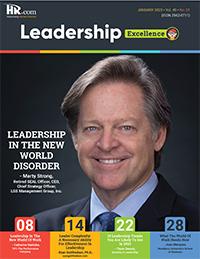
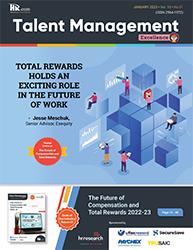
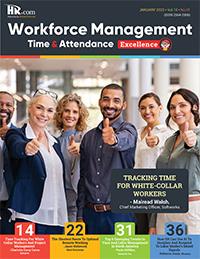

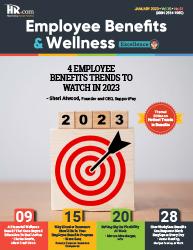
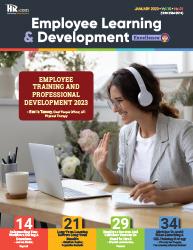
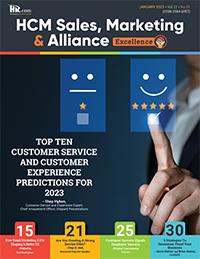
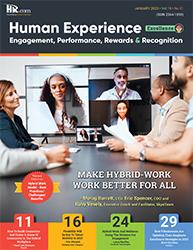


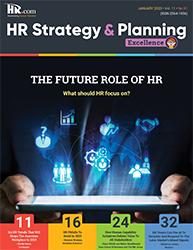
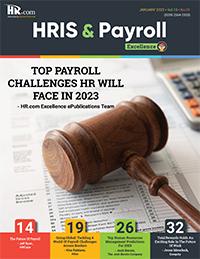
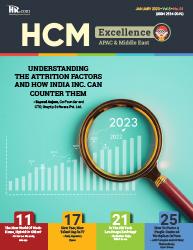
Like to submit an article? Use our online submission form or for more information go to www.hr.com/ExcellencePublications Publications 13 Targeted Publications to Reach Your Audience Informing, Educating, Enlightening and Assisting HR professionals in their personal and professional development, the Excellence series offers high-quality content through the publications!

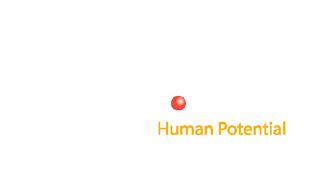
For more information: Phone: 1.877.472.6648 | Email: ePubeditors@hr.com | www.HR.com/epubs Personal Excellence July 2023






















 CEO, BevKaye&Co.
CEO, BevKaye&Co.
 Founder and CEO, Bev
Founder and CEO, Bev

 Dave Ulrich
Rensis Likert Professor, Ross School of Business, University of Michigan Partner, The RBL Group
Julie Winkle Giulioni Author, Virtual /Live Keynote Presenter, Inc.’s Top 100 Leadership Speakers
Dr. Beverly Kaye
Dave Ulrich
Rensis Likert Professor, Ross School of Business, University of Michigan Partner, The RBL Group
Julie Winkle Giulioni Author, Virtual /Live Keynote Presenter, Inc.’s Top 100 Leadership Speakers
Dr. Beverly Kaye




 By Gary Harpst, LeadFirst
By Gary Harpst, LeadFirst



 By Jim Stovall, Narrative Television Network
By Jim Stovall, Narrative Television Network


 By Rana Salman, Salman Consulting, LLC
By Rana Salman, Salman Consulting, LLC



























